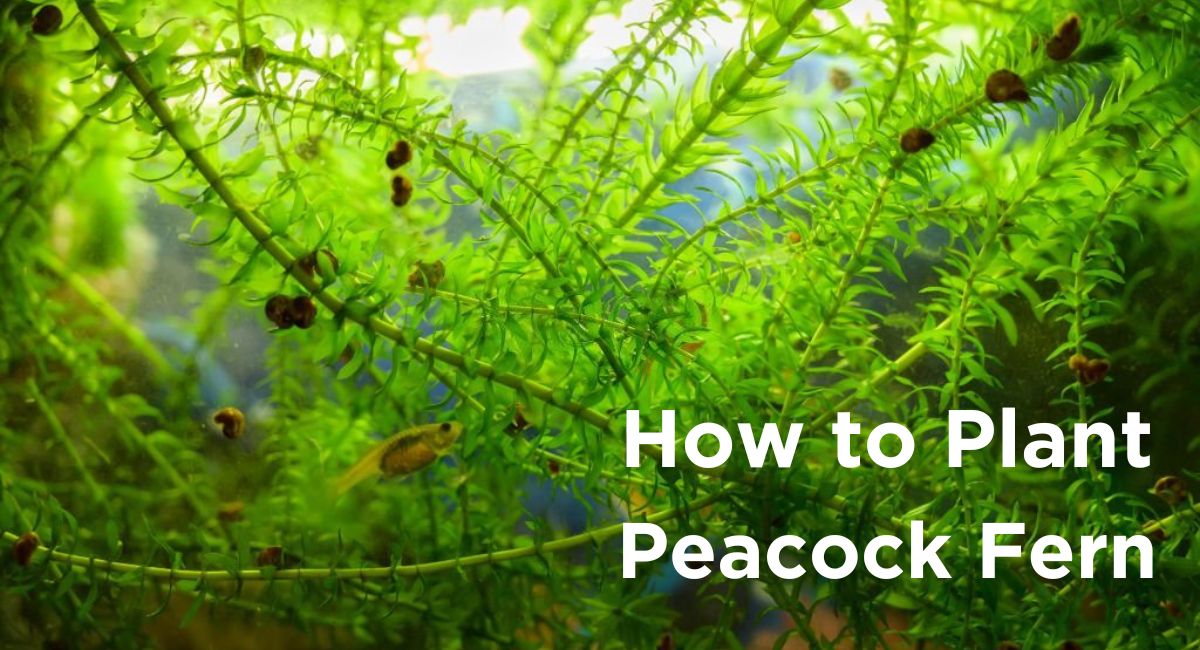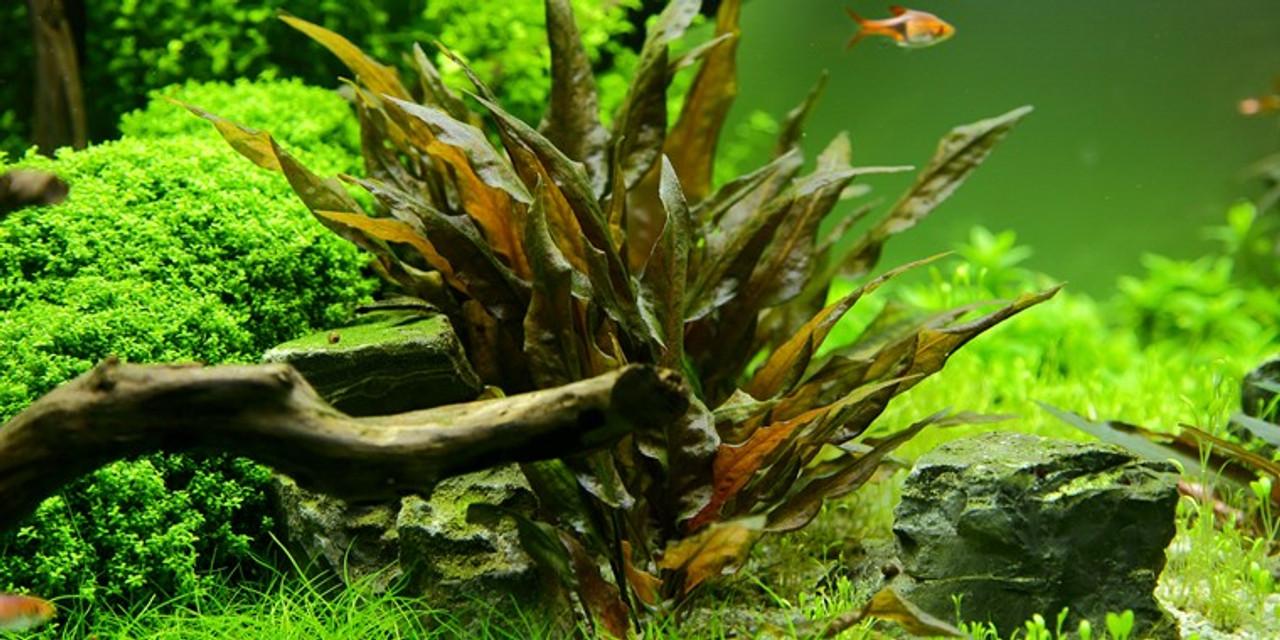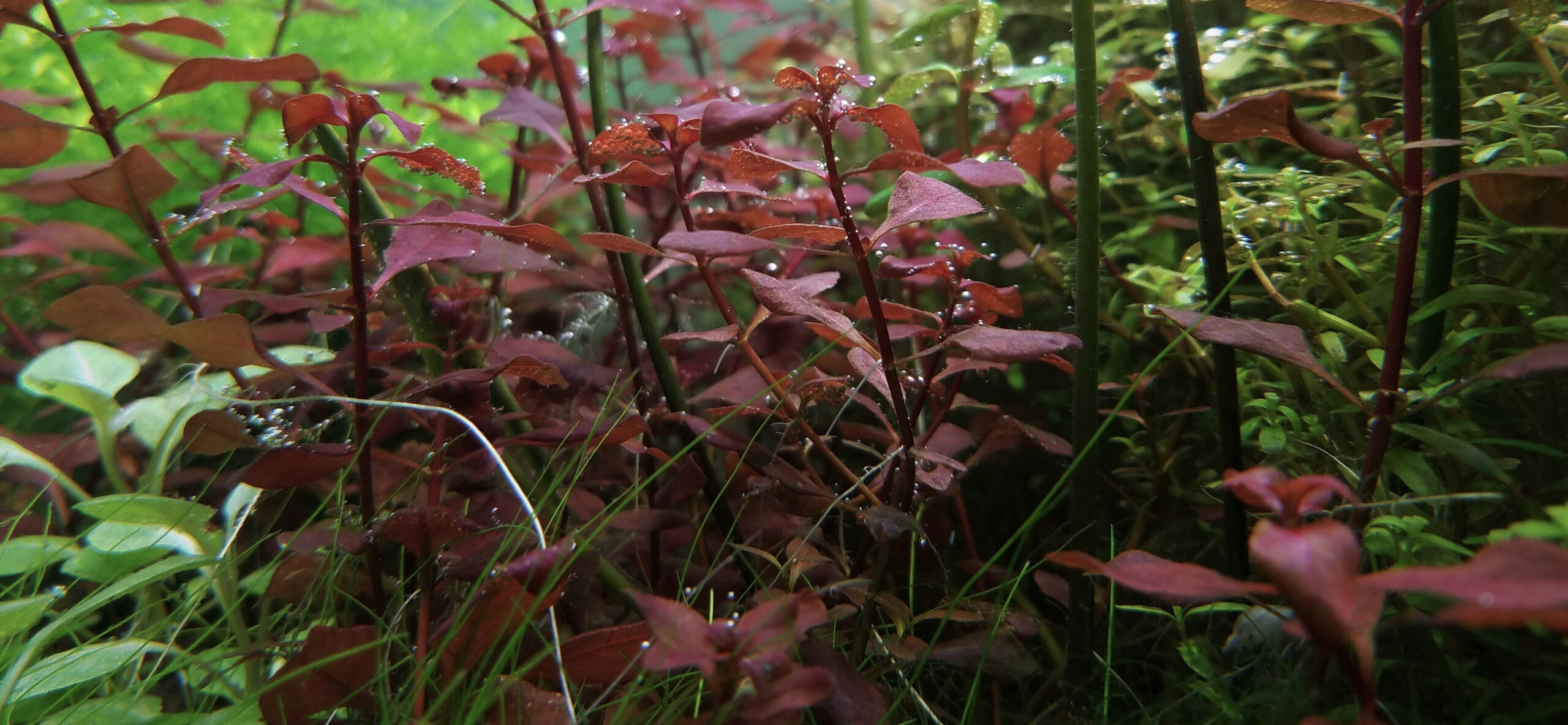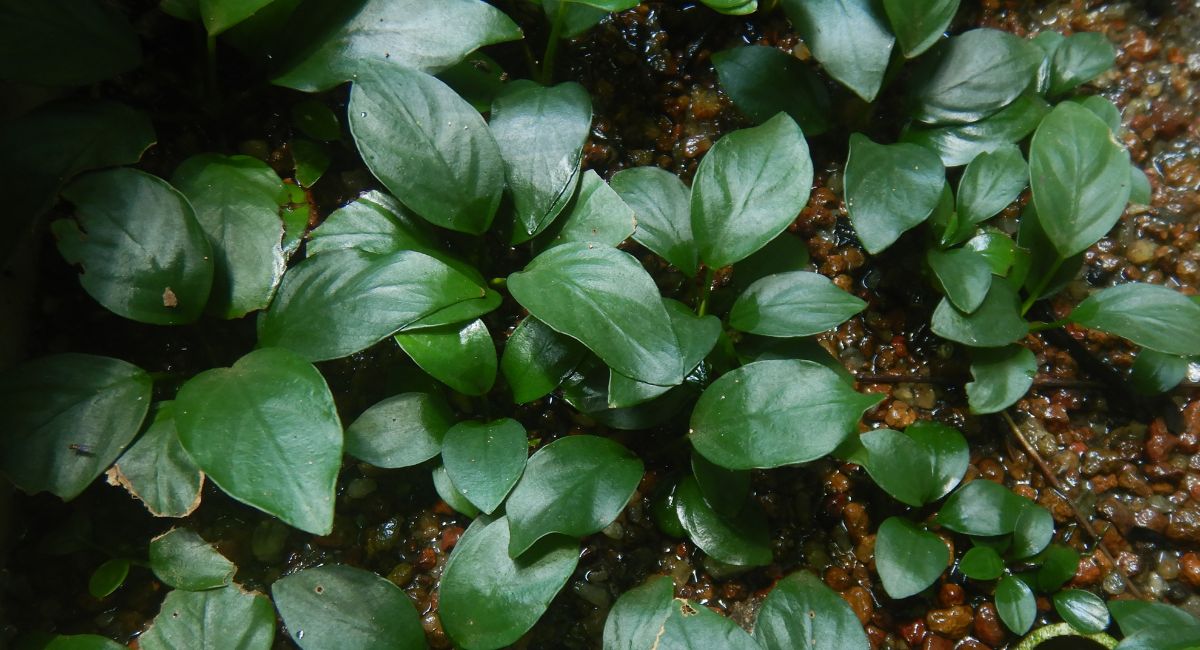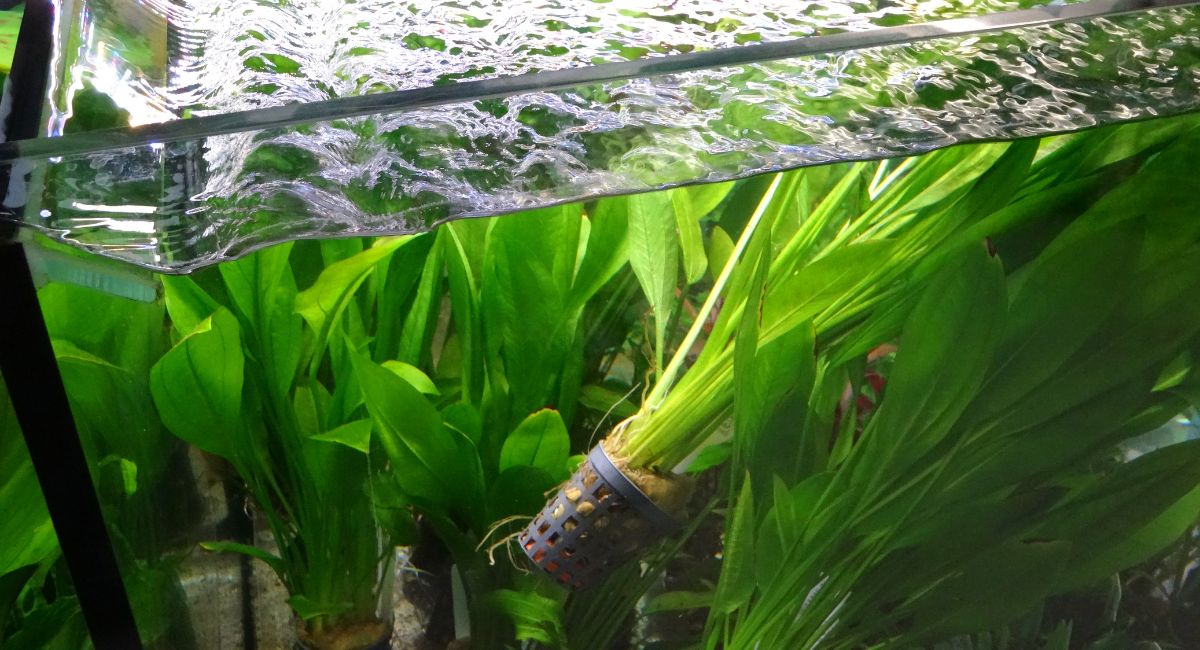Smartplantedaquarium.com participates in affiliate marketing programs. We may earn commissions on purchases made through our affiliate links. This doesn't affect our content or recommendations and we only recommend products we would put in our own tanks.
Transforming your aquarium into a lush underwater oasis has never been more accessible with the addition of the stunning Peacock Fern (scientific name: Selaginella uncinata). As a captivating and ornamental aquatic plant, the Peacock Fern brings an exotic touch to any aquarium setup. Its vibrant green fronds, reminiscent of a peacock’s mesmerizing tail feathers, make it a captivating centerpiece that is sure to leave a lasting impression.
In this comprehensive guide, we will delve into the art of planting and caring for Peacock Fern in your aquarium. Whether you’re a seasoned aquarist or a newcomer to the world of aquatic gardening, this article will equip you with the knowledge and techniques needed to successfully cultivate and maintain this unique plant species.
Contents
Overview of Peacock Fern
Peacock Fern (Selaginella uncinata) is a captivating and enchanting plant species that belongs to the family Selaginellaceae. Also known as the Blue Spike Moss or Rainbow Moss, this unique fern is not a true fern but a member of the lycophyte group. Native to tropical regions, the Peacock Fern thrives in lush, moist environments, making it an ideal choice for aquarium enthusiasts looking to add a touch of vibrant greenery to their underwater landscapes.
Description and Appearance:
Peacock Fern (Selaginella uncinata), also known as the Blue Spike Moss or Rainbow Moss, is a visually stunning and enchanting plant that adds a touch of tropical elegance to any environment. While not a true fern, it belongs to the lycophyte group and shares many fern-like characteristics. The fern’s popularity in the world of aquascaping and indoor gardening stems from its vibrant and mesmerizing appearance.
The Peacock Fern boasts delicate, arching fronds that exhibit a captivating range of colors, resembling the vibrant hues found in a peacock’s iridescent tail feathers. The fronds are densely packed with small leaflets, giving them a feathery and lace-like appearance. The overall texture is velvety and soft to the touch, adding to its allure.
The coloration of the Peacock Fern is truly a sight to behold. The fronds feature a rich and lush shade of green, which serves as the primary background color. However, interspersed throughout the foliage are flashes of brilliant blues, purples, and even bronze, creating a captivating rainbow effect. These striking colors are most pronounced in optimal lighting conditions, making the Peacock Fern a true showstopper when properly cared for.
Origin:
The Peacock Fern is native to tropical and subtropical regions, primarily found in countries like India, Indonesia, Malaysia, and other parts of Southeast Asia. In its natural habitat, it typically grows on the forest floor, nestled among rocks, or along riverbanks where the humidity is high, and the environment remains consistently moist.
Different Types of Peacock Fern:
While the most common variety of Peacock Fern is Selaginella uncinata, there are several other Selaginella species and hybrids that share similar characteristics and visual appeal. Some of the different types of Peacock Fern include:
- Selaginella kraussiana (Krauss’s Spikemoss): Another popular species with bright green foliage and a trailing growth habit. It’s commonly used as a ground cover in terrariums and vivariums.
- Selaginella martensii (Martens’ Spikemoss): This variety features a mix of green, bronze, and copper tones on its fronds, adding a unique touch to any aquarium or terrarium.
- Selaginella wildenowii (Wildenow’s Spikemoss): With its dense, velvety foliage and a mix of green and bluish tones, this fern species adds a lush and tropical feel to the environment.
- Selaginella erythropus (Red-footed Spikemoss): A distinctive variety with deep green fronds and contrasting reddish-brown stems
Benefits of Keeping Peacock Fern in Aquariums
Keeping Peacock Fern (Selaginella uncinata) in aquariums can be a delightful and beneficial addition to your underwater world. This enchanting plant offers various advantages that contribute to the overall health and aesthetics of your aquatic environment. Here are some of the key benefits of incorporating Peacock Fern into your aquarium:
- Aesthetics: Peacock Fern’s captivating appearance adds a touch of tropical elegance to your aquarium. Its lush and feathery fronds, with a mesmerizing blend of green, blue, and purple hues, create a visually striking focal point. The vibrant colors and unique texture elevate the overall beauty of the aquarium, transforming it into a captivating underwater oasis.
- Oxygenation: Like other aquatic plants, Peacock Fern plays a crucial role in oxygenating the water. Through the process of photosynthesis, the plant absorbs carbon dioxide and releases oxygen, which benefits fish and other aquatic inhabitants. A well-oxygenated aquarium promotes healthier and more active aquatic life.
- Filtration: The Peacock Fern aids in natural filtration by absorbing and utilizing excess nutrients and waste in the water. This helps in maintaining water quality and reduces the risk of algae overgrowth, contributing to a cleaner and healthier aquatic environment.
- Habitat Enrichment: Adding Peacock Fern to the aquarium provides an enriched and natural habitat for aquatic animals. The dense foliage offers shelter and hiding places for small fish, shrimps, and other aquatic creatures, providing them with a sense of security and comfort.
- Algae Control: As a fast-growing plant, Peacock Fern can help in outcompeting algae for nutrients and light. Its presence can effectively inhibit the growth of unwanted algae, reducing the need for chemical algae treatments and promoting a more balanced and stable aquarium ecosystem.
- Low Maintenance: Peacock Fern is relatively easy to care for, making it an excellent choice for both beginner and experienced aquarists. It doesn’t require complex fertilization or extensive pruning, making it a hassle-free addition to your aquarium.
- Aquascaping Flexibility: Peacock Fern’s compact size and graceful growth habit make it versatile for aquascaping. It can be placed as a foreground or midground plant, creating depth and texture in the aquarium layout. Additionally, it pairs well with various aquatic plants and decorations, allowing for creative and aesthetically pleasing aquascaping designs.
- Natural Behavior Stimulation: The presence of live plants like Peacock Fern can stimulate natural behaviors in fish, encouraging exploration, foraging, and playfulness. This can lead to healthier and happier aquatic inhabitants.
Required Equipment and Supplies
When setting up an aquarium for Peacock Fern (Selaginella uncinata), you’ll need some specific equipment and supplies to ensure the plant’s health and the overall success of your underwater garden. Here’s a concise list of the required equipment and supplies:
Certainly! Here’s a concise table listing the required equipment and supplies for setting up an aquarium for Peacock Fern:
| Required Equipment and Supplies for Peacock Fern Aquarium |
|---|
| 1. Aquarium Tank |
| 2. Substrate |
| 3. Lighting |
| 4. Water Filtration |
| 5. Heater |
| 6. Water Conditioner |
| 7. Aquarium Thermometer |
| 8. Spray Bottle or Mister |
| 9. Aquarium Gravel Vacuum |
| 10. Aquascaping Tools |
| 11. Aquarium Test Kit |
| 12. Fish or Invertebrates |
| 13. Decorations |
- Aquarium Tank: Choose an appropriate size aquarium to accommodate the Peacock Fern and other aquatic inhabitants comfortably.
- Substrate: Provide a well-draining aquatic substrate that retains moisture but prevents waterlogging. A mix of aquarium soil and sand is ideal.
- Lighting: Install a suitable aquarium light to provide adequate illumination for the Peacock Fern. LED lights with adjustable intensity are often recommended.
- Water Filtration: Use a reliable aquarium filter to maintain water quality and remove debris and waste. Choose a filter appropriate for the size of your tank.
- Heater: If you plan to keep tropical fish with your Peacock Fern, a submersible aquarium heater may be necessary to maintain a stable water temperature.
- Water Conditioner: Use a water conditioner to remove chlorine and chloramine from tap water before adding it to the aquarium.
- Aquarium Thermometer: Monitor the water temperature to ensure it remains within the suitable range for both the Peacock Fern and other aquatic species.
- Spray Bottle or Mister: A spray bottle or mister is useful for regularly misting the fern’s fronds to maintain the required humidity levels.
- Aquarium Gravel Vacuum: This tool helps with regular maintenance and water changes by removing debris from the substrate.
- Aquascaping Tools: Tweezers and scissors designed for aquascaping can aid in planting and trimming the Peacock Fern and other aquatic plants.
- Aquarium Test Kit: Invest in a water test kit to monitor parameters like pH, ammonia, nitrite, and nitrate levels regularly.
- Fish or Invertebrates: If you plan to keep fish or invertebrates in the aquarium alongside the Peacock Fern, select compatible species and research their specific care requirements.
- Decorations: Add aquarium decorations like rocks, driftwood, or aquatic ornaments to create a visually appealing environment and provide additional hiding spots for aquatic inhabitants.
How to Plant Peacock Fern in Aquarium
Planting Peacock Fern (Selaginella uncinata) in an aquarium is a straightforward process that requires attention to the specific needs of this unique plant species. Follow these steps to ensure successful planting and healthy growth:
Step 1: Prepare the Aquarium Substrate
- Select the Right Substrate: Choose a well-draining aquatic substrate that can retain moisture without waterlogging. A mix of aquarium soil and sand works well for Peacock Ferns.
- Clean the Substrate: Rinse the substrate thoroughly under running water to remove any dust or debris. Avoid using chemicals or soaps that can be harmful to aquatic life.
- Create a Slope: Form a gentle slope in the substrate to create different levels of planting depth. This will allow you to position the Peacock Fern and other aquatic plants effectively.
- Flatten the Surface: Level the substrate surface using your hand or a flat tool to ensure stability when planting the fern.
Step 2: Positioning the Peacock Fern
- Choose a Location: Select a suitable spot in the aquarium with moderate to bright indirect light. Avoid placing the fern directly under strong lighting, as it can lead to excessive drying.
- Planting Depth: Gently insert the Peacock Fern into the substrate, burying the roots and rhizomes slightly below the surface. Ensure that the fronds are above the substrate to avoid rotting.
- Spacing: Leave adequate space between individual Peacock Ferns to allow them room to grow and spread. Overcrowding can lead to competition for resources and hinder their development.
- Background or Foreground: Depending on the fern’s size and growth habit, position it as a background or foreground plant in your aquascape, considering the overall design aesthetics.
Step 3: Provide Proper Care
- Maintain Humidity: Regularly mist the Peacock Fern’s fronds with a spray bottle or mister to maintain the required high humidity levels. This will mimic its natural tropical habitat.
- Optimal Water Conditions: Keep the aquarium water clean and well-maintained. Regularly check water parameters using a test kit and maintain appropriate temperature, pH, and water hardness.
- Avoid Waterlogging: While the Peacock Fern enjoys moisture, it is essential to avoid waterlogging the substrate. Excess water can lead to root rot and adversely affect the plant’s health.
- Fertilization: Peacock Ferns typically do not require heavy fertilization. However, if needed, use a diluted liquid fertilizer specifically formulated for aquarium plants.
Step 4: Monitor Growth and Maintenance
- Observe Growth: Regularly monitor the growth of the Peacock Fern to ensure it is thriving in the aquarium environment. Healthy ferns will exhibit vibrant colors and lush fronds.
- Pruning: Trim any yellowing or damaged fronds using aquascaping scissors to promote new growth and maintain the plant’s appearance.
- Remove Debris: Use an aquarium gravel vacuum during water changes to remove any accumulated debris or detritus around the fern’s base.
- Prevent Algae Growth: Control algae growth by maintaining proper lighting duration and nutrient balance. The presence of healthy Peacock Fern can help in naturally reducing algae.
Step 5: Watering and Maintenance
- Regular Watering: Along with misting, ensure that the Peacock Fern receives sufficient water from the aquarium. Keep the substrate consistently moist but not waterlogged, as overly wet conditions can lead to root rot.
- Check Water Quality: Regularly test the water quality, especially ammonia and nitrate levels, to ensure they remain within safe limits. Elevated levels of these compounds can be harmful to the fern and other aquatic life.
- Water Changes: Perform regular partial water changes to keep the aquarium water fresh and free from accumulated impurities. A 20-25% water change once a week is generally recommended.
Step 6: Positioning with Other Plants and Decorations
- Complementing Aquatic Plants: When designing your aquascape, consider the placement of the Peacock Fern in harmony with other aquatic plants. Combining different textures and colors can create an aesthetically pleasing and natural-looking aquarium.
- Driftwood or Rocks: Incorporate driftwood or rocks as hardscape elements in the aquarium. These can serve as natural anchors for the Peacock Fern and add an authentic touch to the aquatic environment.
- Avoid Overcrowding: Be mindful not to overcrowd the aquarium with too many plants or decorations. Adequate space and flow are crucial to ensure all plants, including the Peacock Fern, receive adequate light and nutrients.
Step 7: Observation and Adaptation
- Monitor Plant Health: Regularly observe the Peacock Fern for signs of distress or disease. Keep an eye out for yellowing fronds, wilting, or any indications of inadequate care.
- Adjust Care as Needed: Based on your observations, adapt your care routine to cater to the fern’s specific needs. This may involve adjusting lighting intensity, misting frequency, or fertilization.
- Enjoy the Results: As the Peacock Fern thrives in your aquarium, take pleasure in the beauty it adds to the underwater landscape. The lush greenery and vibrant colors of the fern will be a source of delight and satisfaction for both you and your aquarium’s inhabitants.
Mistakes to Avoid When Planting Peacock Fern
When planting Peacock Fern (Selaginella uncinata) in your aquarium, there are several common mistakes to avoid ensuring the successful growth and health of the plant. Here are some key mistakes to be mindful of:
| Mistakes to Avoid When Planting Peacock Fern in Your Aquarium |
|---|
| 1. Overwatering: Keep substrate consistently moist, not waterlogged. |
| 2. Inadequate Humidity: Regularly mist to maintain high humidity levels. |
| 3. Improper Lighting: Provide moderate to bright indirect light. |
| 4. Incorrect Water Quality: Test water parameters and perform regular water changes. |
| 5. Lack of Nutrients: Ensure the aquarium water has essential trace elements. |
| 6. Poor Drainage: Use a well-draining substrate to prevent waterlogging. |
| 7. Overcrowding: Provide adequate space for the fern to receive light and nutrients. |
| 8. Drastic Temperature Changes: Maintain a stable water temperature. |
| 9. Neglecting Maintenance: Regularly trim, remove dead fronds, and perform water changes. |
| 10. Ignoring Signs of Distress: Address issues promptly to prevent further decline. |
- Overwatering: One of the most common mistakes is overwatering the Peacock Fern. While it requires a moist environment, excessive waterlogging can lead to root rot and cause the plant to deteriorate. Ensure the substrate remains consistently moist, but not soggy, and avoid letting water accumulate around the fern’s base.
- Inadequate Humidity: Peacock Ferns are tropical plants that thrive in high humidity environments. Failing to provide sufficient humidity, especially in dry indoor settings, can cause the fern’s fronds to dry out and lose their vibrant colors. Regular misting is essential to maintain the required humidity levels.
- Improper Lighting: Placing the Peacock Fern in direct, intense light can lead to leaf burn and damage. On the other hand, insufficient light may result in weak and leggy growth. Opt for moderate to bright indirect lighting to strike the right balance.
- Incorrect Water Quality: Neglecting water quality can harm not only the Peacock Fern but also other aquarium inhabitants. Ammonia and nitrate buildup from overfeeding or inadequate filtration can stress the plant and lead to its decline. Regularly test water parameters and perform water changes as needed.
- Lack of Nutrients: Although Peacock Ferns generally do not require heavy fertilization, they still need essential nutrients to thrive. Ensure the aquarium water has trace elements and minerals necessary for healthy growth. Liquid fertilizers specifically formulated for aquarium plants can be used in moderation.
- Poor Drainage: Choosing the wrong substrate or using inadequate drainage layers can impede water flow and lead to waterlogged conditions. A well-draining substrate, such as a mix of aquarium soil and sand, is crucial to maintain proper drainage.
- Overcrowding: Avoid overcrowding the Peacock Fern with other plants or aquarium decorations. Providing adequate space ensures the fern receives enough light and access to nutrients.
- Drastic Temperature Changes: Rapid and drastic temperature fluctuations can stress the Peacock Fern and hinder its growth. Maintain a stable water temperature within the recommended range for tropical plants and aquatic inhabitants.
- Neglecting Maintenance: Regular maintenance is essential to the health of the Peacock Fern. Neglecting trimming, removing dead fronds, or ignoring water changes can lead to deteriorating conditions for the plant.
- Ignoring Signs of Distress: Be attentive to any signs of distress in the Peacock Fern, such as wilting or yellowing fronds. Address issues promptly by adjusting care routines or correcting any environmental imbalances.
How to Use Peacock Fern for Aquascaping
Peacock Fern (Selaginella uncinata) can be a stunning addition to aquascapes, enhancing the visual appeal and creating a naturalistic underwater landscape. Here are some effective ways to use Peacock Fern for aquascaping:
| Effective Ways to Use Peacock Fern for Aquascaping |
|---|
| 1. Foreground Planting |
| 2. Moss Wall or Moss Tree |
| 3. Midground Clusters |
| 4. Accent with Rocks or Stones |
| 5. Complement with Other Plants |
| 6. Terrarium or Paludarium Feature |
| 7. Aquatic Moss Carpet |
- Foreground Planting: Plant Peacock Fern in the foreground of your aquarium to create a lush and vibrant carpet. Its feathery fronds will add texture and depth to the front of the tank, providing a visually captivating focal point.
- Moss Wall or Moss Tree: Attach Peacock Fern to driftwood or rocks using fishing line or mesh to create a moss wall or moss tree effect. This not only showcases the fern’s unique appearance but also provides a stunning vertical element to the aquascape.
- Midground Clusters: Group several Peacock Ferns together in the midground of the aquarium to form clusters. This arrangement adds a sense of density and provides a natural hiding spot for small fish and invertebrates.
- Accent with Rocks or Stones: Position Peacock Fern near rocks or stones to create a sense of contrast. The soft, feathery fronds juxtaposed against the hard textures of hardscape elements create a visually striking effect.
- Complement with Other Plants: Pair Peacock Fern with other compatible aquatic plants to create a balanced and cohesive aquascape. Choose plants with varying leaf shapes and sizes to add interest and dimension.
- Terrarium or Paludarium Feature: If you have a terrarium or paludarium setup, Peacock Fern is an excellent choice for the semi-aquatic region. It will thrive in the high humidity environment and provide a seamless transition between land and water areas.
- Aquatic Moss Carpet: Integrate Peacock Fern with other moss species, such as Java Moss or Christmas Moss, to create an attractive and vibrant aquatic moss carpet. This combination will bring a rich tapestry of green to the aquarium floor.
Conclusion
Planting Peacock Fern (Selaginella uncinata) can be a rewarding and enriching experience for aquarium enthusiasts and aquascaping enthusiasts alike. This unique and visually captivating plant offers a touch of exotic beauty and lush greenery to any underwater landscape. Throughout this article, we have explored the step-by-step process of successfully planting and caring for Peacock Fern, ensuring its optimal growth and health.
From choosing the right aquarium setup with proper lighting, substrate, and water quality, to providing the necessary humidity and creating a balanced environment, every aspect of Peacock Fern care has been covered. By avoiding common mistakes and adopting best practices, we can ensure that this slow-growing and hardy fern thrives in its aquatic habitat.
The versatility of Peacock Fern allows for creative aquascaping possibilities, such as using it in the foreground to form a lush carpet or incorporating it into vertical moss walls and terrarium features. With the right companions and suitable arrangements, Peacock Fern can harmonize beautifully with other aquatic plants, rocks, and driftwood, creating a naturalistic and captivating underwater scene.
Frequently Asked Questions
1. What are the best companion plants for Peacock Fern?
Peacock Fern can thrive alongside various other aquatic plants. Some excellent companion plants include Java Moss, Anubias, Cryptocoryne, and Dwarf Sagittaria. These plants generally have similar care requirements and create a beautiful, natural-looking aquascape when combined with Peacock Fern.
2. What are the best tank mates for Peacock Fern?
Peacock Fern is a non-aquatic plant, meaning it prefers to grow emersed (partially above the waterline) rather than fully submerged. Therefore, it’s not well-suited for a traditional aquarium setup with fish. However, it can still be grown in a terrarium alongside small, non-destructive animals like tropical land snails, small tree frogs, or some species of small insects.
3. How fast does Peacock Fern grow?
Peacock Fern is known for its relatively slow growth rate compared to other aquarium plants. Under optimal conditions, it can grow about 1 to 2 inches (2.5 to 5 centimeters) in height per month. However, the growth rate can vary based on factors such as light intensity, temperature, humidity, and nutrient availability.
4. How big does Peacock Fern grow?
When grown emersed, Peacock Fern typically reaches a height of 6 to 8 inches (15 to 20 centimeters) and can spread outwards to cover an area of approximately 12 inches (30 centimeters) in diameter. It is essential to provide enough space for the plant to grow and expand in the terrarium.
5. Is Peacock Fern suitable for beginners?
Peacock Fern can be challenging for beginners to grow successfully, primarily because it requires specific conditions and care. It prefers high humidity, stable temperatures, and moderate to bright indirect light. Additionally, its non-aquatic nature requires a terrarium setup, which may require more attention and monitoring than a traditional aquarium. Beginners might find it easier to start with more beginner-friendly aquatic plants before attempting to grow Peacock Fern.
6. Is Peacock Fern suitable for a low-tech aquarium?
As Peacock Fern is not an aquatic plant and prefers a terrarium setup, it is not suitable for a low-tech aquarium. Low-tech aquariums typically consist of easy-to-care-for aquatic plants that thrive without the need for CO2 injection, high-intensity lighting, or complex fertilization. Peacock Fern requires a different environment to grow successfully, making it unsuitable for a traditional low-tech aquarium setup.
